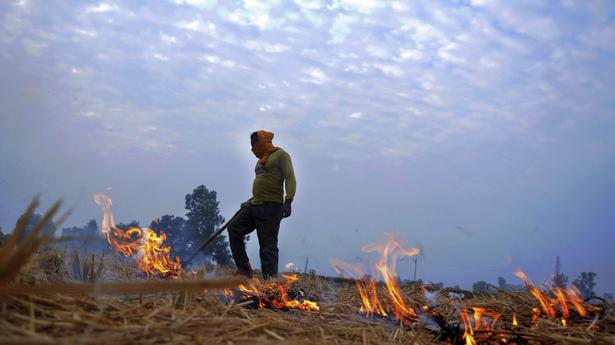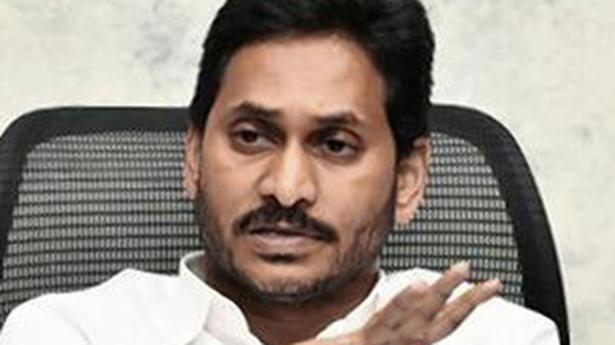What is the U.S. Congress’ stand on tighter gun control laws? Can the President intervene to usher in reforms?
What is the U.S. Congress’ stand on tighter gun control laws? Can the President intervene to usher in reforms?
The story so far: On May 24, a gunman went on a shooting rampage at Robb Elementary School in the small town of Uvalde, Texas, killing 19 children and two teachers. The attack has reminded the U.S. yet again that it has failed to act to stop gun crimes despite the grim toll on human life for several decades. The shooter, identified in reports as 18-year-old Salvador Ramos, carried out the massacre using AR-15 assault rifles, which he allegedly purchased legally from a gun store. The murders, which came scarcely 10 days after 10 people were shot dead at a grocery store in Buffalo, New York, an incident identified as a racist hate crime, have prompted another round of acrimony between liberals and conservatives on the need for tighter gun control laws. U.S. President Joe Biden wasted no time in condemning the attack but was sketchy on details regarding what legislation or executive actions he hoped to push forward to close regulatory loopholes that allow teenagers to buy assault weapons, and, more broadly, a lack of background checks for potential gun buyers. Neither Mr. Biden, nor any of his Democratic predecessors have succeeded in getting common-sense gun control reform passed in the U.S. Congress owing to Republican lawmakers’ refusal to budge on their view regarding their constitutional right to bear arms.
How many school shootings have occurred in recent years?
The Uvalde school shooting is the worst such attack on U.S. soil since the incident at Sandy Hook elementary attack in Newtown, Connecticut, in 2012, in which 20 first-graders and six school employees were killed. A similar toll on human life came after a shooting at Marjory Stoneman Douglas High School in 2018, when a former student of the school in Parkland, Florida, killed 17 persons and wounded 17 others.
Overall, there have been at least 26 school shootings in 2022 alone and at least 118 incidents since 2018, according to reports that have tracked this statistic over the past four years. However, these include ‘non-mass shootings’ where fewer than four persons were killed in a single incident. Using this statistic, 2021 witnessed 34 shootings, the highest number during this period, followed by 24 incidents each in 2019 and 2018 and 10 shootings in 2020.
Considering mass school shootings alone, there have been 13 such attacks since 1966, including notably the Columbine High School massacre of 1999, at that time the worst mass shooting at a school in American history. It is concerning that the Columbine attack’s death toll now ranks fourth, after the three more recent shootings at Uvalde, Parkland and Newtown overtook the former on that grim statistic during the past decade.
What is the role of the Second Amendment?
The U.S.’s penchant for gun ownership stems from its deep belief in the Second Amendment of its constitution, which assures its citizenry that “a well-regulated Militia, being necessary to the security of a free State, the right of the people to keep and bear Arms, shall not be infringed.” The Second Amendment, ratified in 1791, was one of 10 such that together make up the Bill of Rights in the U.S. constitution. The original intent of the founding fathers of the nation was to give to the people the right to defend themselves against an oppressive government and create an armed militia that could be recruited into federal military in the event of a war with a foreign power. However, after the balance of power shifted from the states to the federal government, including technological advances that made the U.S. military a far superior force than any local or state militia could hope to be, the only interpretation of the Second Amendment that remained was that it guaranteed, at the individual level, the right to bear arms.
Editorial | Unending tragedy: On U.S. school shootings and gun control debate
In 1939, the U.S. Supreme Court considered the matter in United States v. Miller and ruled that local, state, and federal legislative bodies possessed the authority to regulate firearms without implicating a constitutional right given that there was no individual right to bear arms, only a collective right of the citizenry. Using this ruling the state then regulated the inter-state commerce of sawed-off shotguns, which it deemed to not be consistent with any requirements of a “well-regulated militia.” That interpretation stood until 2008, in the case of District of Columbia v. Heller, where the Supreme Court held that the “Second Amendment protects an individual right to possess a firearm unconnected with service in a militia, and to use that arm for traditionally lawful purposes, such as self-defence within the home,” effectively reading down a ban on handgun possession in Washington DC.
Regardless of the state of legal protections, a strong culture of gun ownership has permeated the broader consciousness of security-minded U.S. citizens since the times of the ‘Wild West’ or America frontier days. Today that culture is most fervently institutionalised in the Republican party, which has close links to the National Rifle Association, also a well-networked and deep pocketed organisation that systematically lobbies with lawmakers on Capitol Hill to get specific laws passed favouring the possession and trade of firearms.
It is in this context that there are no surprises that Congress rejected no fewer than 17 attempts by the administration of former President Barack Obama to get common-sense gun control passed on the floor of the Senate. In the end Mr. Obama resorted to passing gun control reform by diktat, that is through the temporary route of executive actions. Exercising presidential power in this manner may be the only option available to Mr. Biden. These should, at a minimum, include an assault weapons ban, expanded background checks, and ban on gun ownership by those with mental illness, criminal records, or minors.





